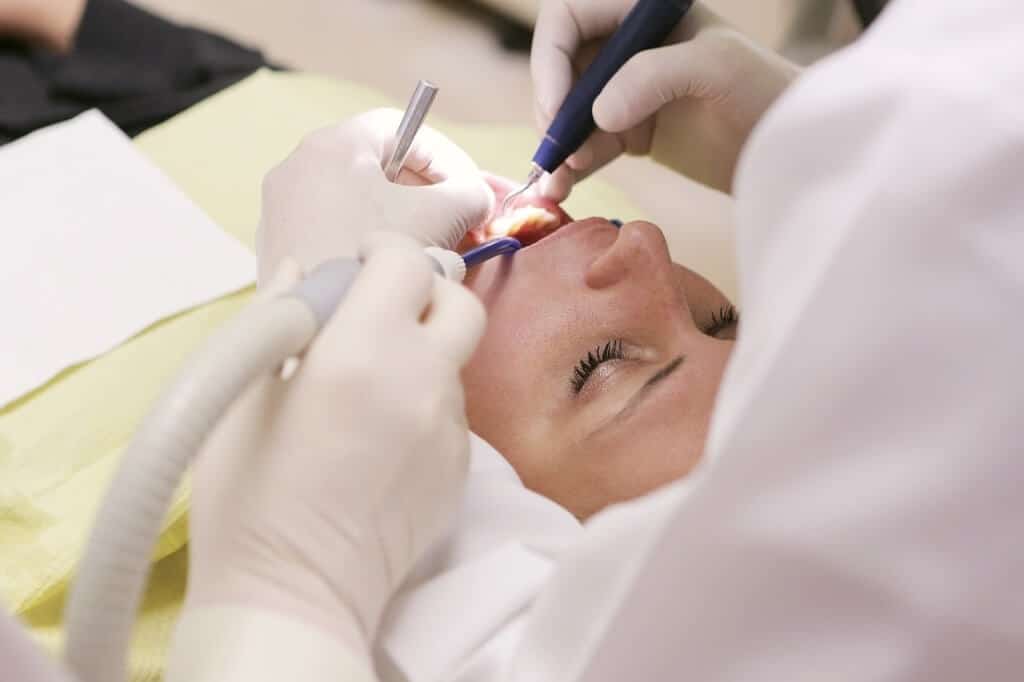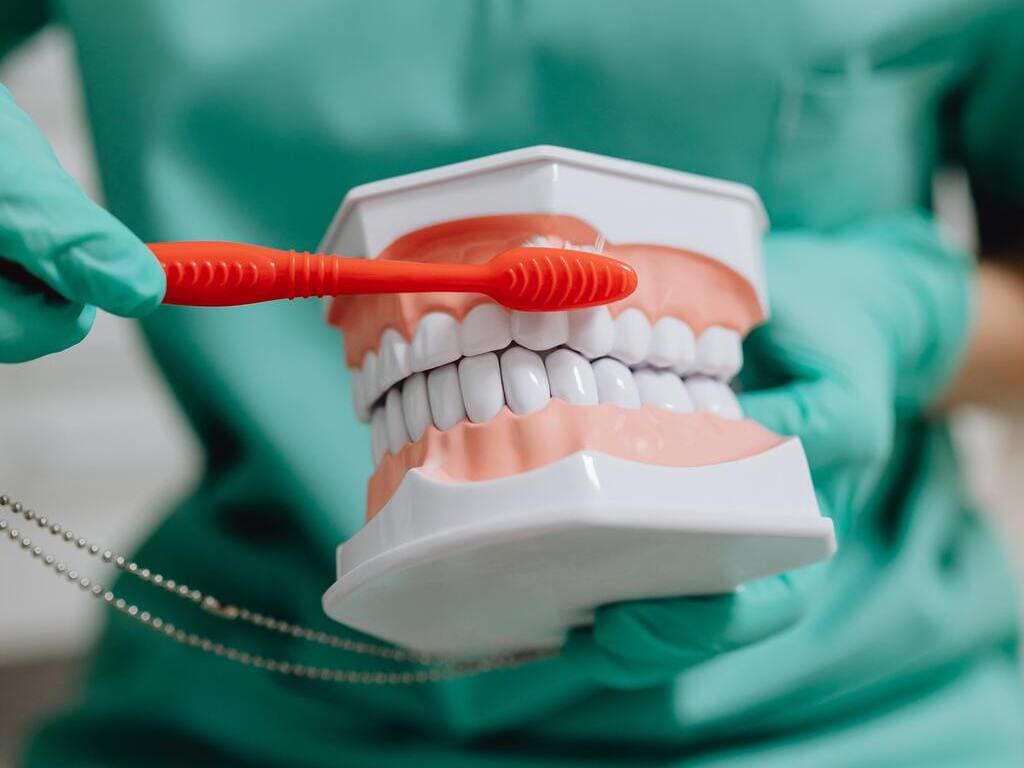If you’ve ever woken up with jaw pain or a tight feeling in your teeth, you may be suffering from bruxism.
This condition, also known as teeth grinding or clenching, is more common than you imagine and can have a negative impact on your oral and overall health.
What causes bruxism? What are the symptoms and when should you seek treatment? This article will give you all the answers you need including the prevention of this dental disease.
Teeth clenching can be caused by stress, anxiety, dental alignment problems, and in some cases, underlying medical conditions. Symptoms may include facial muscle pain, headache, excessive tooth wear, and neck and shoulder pain.
It is important to seek treatment for teeth clenching as it can damage your teeth and lead to long-term complications such as chronic jaw pain and sleep disorders.
From relaxation therapies to the use of dental splints and botox 1, there are a variety of treatments available to relieve excessive teeth clenching.
Consult your dentist to obtain an accurate diagnosis and explore the treatment options that best suit your needs. To treat bruxism in Quito, Ecuador, you have us at the Asiri Dental Care Center

Table of Content
What is Bruxism?
Bruxism is an involuntary disorder characterized by grinding or clenching of the teeth. It can occur both during the day and at night, although nocturnal bruxism is the most common. This problem can affect both adults and children.
It can be primary or secondary. Primary bruxism is when there is no identifiable underlying cause, while secondary bruxism is related to other disorders or medical conditions, such as stress, anxiety, sleep disorders, or temporomandibular joint (TMJ) problems.
This parafunctional habit affects between 8% and 31.5% of the world’s population.2
Most common causes of Bruxism
- Stress and anxiety. People who are under great emotional pressure or who experience high levels of stress tend to clench or grind their teeth as a way of releasing tension.
- Problems in the temporomandibular joint (TMJ). If the joint that connects the jaw to the skull does not function properly, it can cause overload on the jaw muscles and trigger bruxism.
- Poor dental alignment: . If the teeth do not fit properly when the jaw closes, teeth grinding is more likely to occur.
- Bad habits: excessive alcohol or caffeine consumption, smoking, recreational drug use.
- Sleep disorders: A connection has also been found between bruxism and sleep disorders, such as insomnia or sleep apnea.
- Medications: Some psychotropic medications, such as antidepressants and antipsychotics, can increase the risk of bruxism. If you are taking any medication and experience symptoms of bruxism, it is important to talk to your doctor to evaluate if the medication may be related.
Signs and Symptoms of Bruxism
This disorder can manifest itself in different ways, and the symptoms can vary from person to person. Some of the most common symptoms of bruxism include:
- Teeth grinding: The most obvious symptom of bruxism is teeth grinding, especially during sleep. You may notice a harsh, repetitive sound as you clench or grind your teeth.
- Facial pain: Bruxism can cause pain and tension in the muscles of the jaw, face and neck. This muscle tension can cause headaches and general facial discomfort.
- Tooth wear: Bruxism can cause excessive wear on the teeth, especially on the chewing surfaces. Over time, this can lead to problems such as fractured teeth, cavities, and tooth sensitivity.
- Ear pain: Some people who suffer from bruxism may experience ear pain due to tension in the jaw muscles that extends to the ear.
- Sleep disorders: Teeth grinding during sleep can disrupt sleep quality and cause insomnia or frequent awakenings.
If you experience any of these symptoms, it is important to seek dental care to determine if you suffer from bruxism.
Other Symptoms:
- Tongue marked on the edges
- Dislocation of the temporomandibular joint (TMJ)
- Temporomandibular joint (TMJ) block
- Injuries to the inside of the cheeks
Types of Bruxism
We can categorize teeth grinding in two ways:
Depending on the moment
- Sleep bruxism: if it occurs while sleeping
- Daytime or awawe bruxism: if it occurs while we are awake
Depending on the Type of Movement Performed
- Clenching: leave the bite closed by exerting constant force
- Grinding: leave the bite closed and make horizontal movements
- Tapping: continuous movements of opening the bite a little and closing it generating vertical blows (like shivering)
Complications of Untreated Bruxism
Untreated bruxism can become chronic lead to serious long-term consequences.
- Excessive tooth wear can cause dental fractures, loss of enamel and tooth sensitivity
- Generalized decrease in the size of all teeth and therefore the entire vertical width (dimension) of your smile.
- Gum problems: It can also affect the health of the gums and tooth-supporting tissues, increasing the risk of periodontal disease.
- Temporomandibular joint (TMJ) disorders 3
- Sleep disorders, such as insomnia or sleep apnea.
These complications will most likely require root canal treatments, large composite build-ups, dental overlays, or bite lifting through tabletops.
How is Bruxism diagnosed?
If you experience teeth grinding, it is important to seek the opinion of a dental health professional.
Your dentist will be able to perform an examination and evaluate your medical history to determine if you suffer from teeth grinding or clenching. They may also recommend additional tests, such as dental x-rays, to evaluate the damage to your teeth.
The main sign of bruxism is undoubtedly dental attrition, which is the wear of the occlusal or incisal surfaces of the teeth and the consequent loss of vertical dimension that gives way to a deep bite.
There are also other signs such as gum recession and dental abfraction, which is the loss of parts of the cervical structure of the tooth due to impact forces that are in the form of slits.
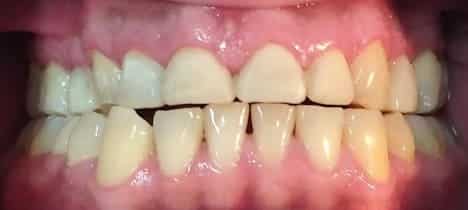
Bruxism Risk Factors
- Stress
- Age, in fact, is very common in children
- Family history
- Hyperactive personality
- Some medicines, drugs, alcohol, tobacco, caffeine
- Some diseases
Treatment Options for Bruxism
Fortunately, there are several treatment options available. The choice of treatment will depend on the severity of your condition and the underlying causes.
- Mouthguards: Mouthguards are custom devices that fit over your teeth to protect them from grinding and clenching. These protectors can reduce tooth wear and relieve muscle tension, they are also known as muscle-relaxing splints.
- Relaxation therapies: Relaxation therapies, such as physical therapy, cognitive behavioral therapy, and meditation, can help reduce the stress and anxiety that triggers bruxism.
- Medications: In some cases, medications may be prescribed to control the symptoms of bruxism, such as muscle relaxants, Botox, pain relievers, and medications for sleep disorders.
- Correction of dental alignment: If bruxism is related to a misaligned bite or malocclusion, orthodontic treatments may be necessary to correct the position of the teeth and reduce the pressure placed on them.
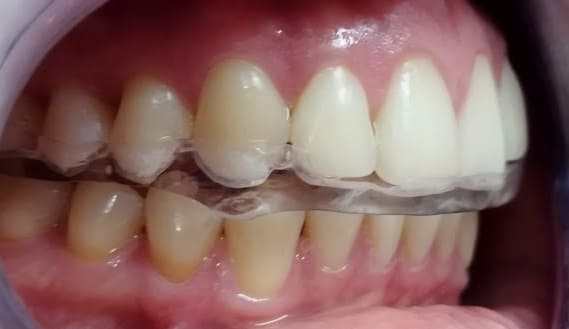
Home Remedies to Relieve Bruxism
In addition to seeking professional treatment, there are steps you can take at home to relieve the symptoms of bruxism. These include practicing relaxation techniques, such as meditation or yoga, avoiding foods and drinks that contain caffeine, and applying hot or cold compresses to facial muscles to reduce tension.
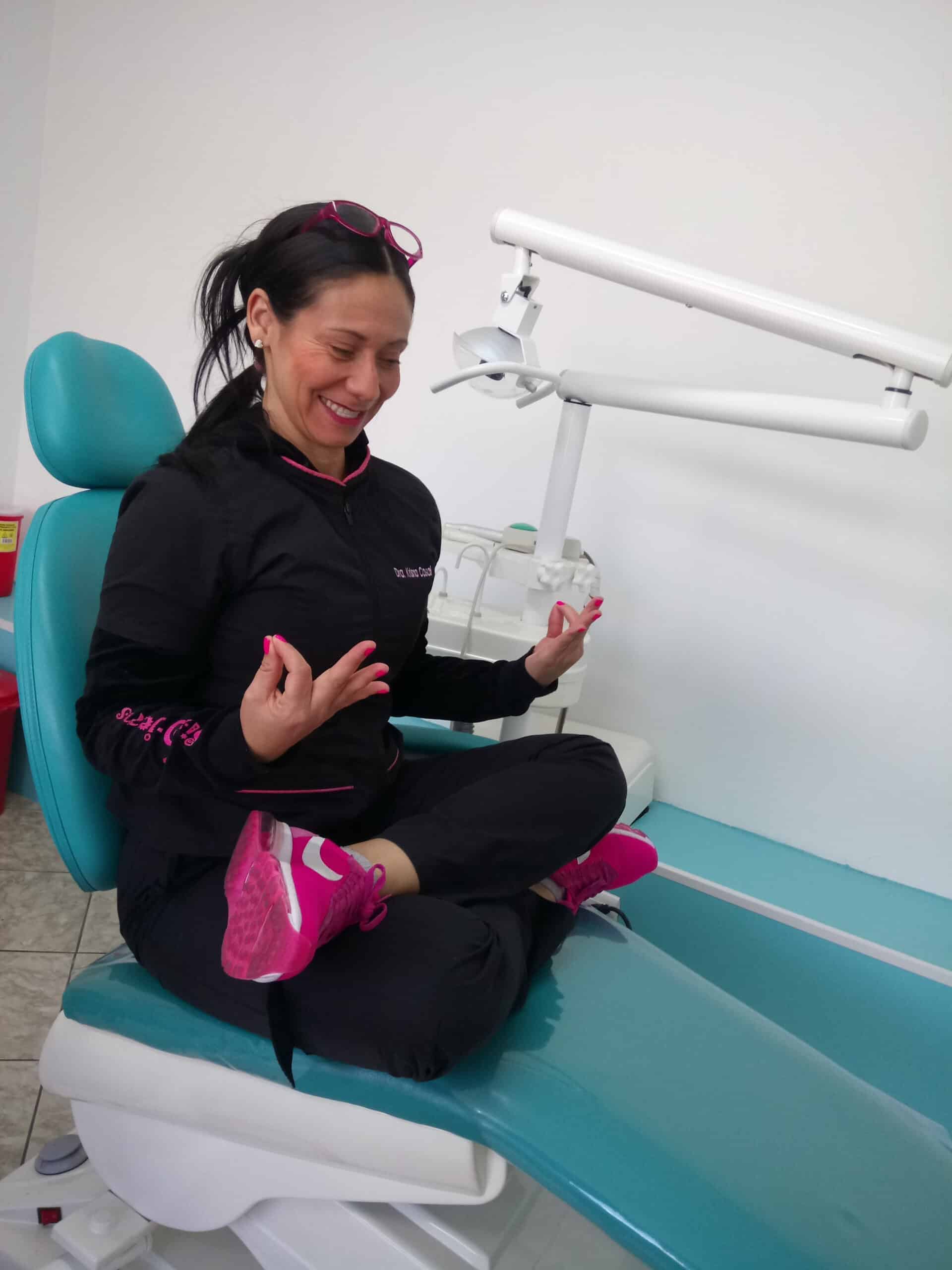
Lifestyle Changes to Control Bruxism
Lifestyle also plays an important role in controlling bruxism. Avoiding alcohol and tobacco use, maintaining a regular sleep schedule, and reducing stress through activities such as regular exercise and self-care can help prevent or reduce grinding episodes.
Precautionary Measures
It is important to take preventative measures to avoid further damage to your teeth and overall health. This includes avoiding biting on hard objects, such as pencils or pens, and wearing mouth guards during activities that may increase stress on facial muscles, such as sports.
Conclusion
Bruxism is a condition that can have a significant impact on your oral and general health. If you are experiencing symptoms of bruxism, it is important to seek the help of a dental health professional for an accurate diagnosis and appropriate treatment plan. Don’t ignore the symptoms and take steps to protect your teeth and general well-being.
Remember, teeth grinding can be treated and controlled. You don’t have to live with pain and discomfort. Seek help today and regain your healthy smile.
References
- Kumar, A., Spivakovsky, S. Bruxism- is botulinum toxin an effective treatment?. Evid Based Dent 19, 59 (2018). https://doi.org/10.1038/sj.ebd.6401311 ↩︎
- Manfredini D, Winocur E, Guarda-Nardini L, Paesani D, Lobbezoo F. Epidemiology of bruxism in adults: a systematic review of the literature. J Orofac Pain. 2013 Spring;27(2):99-110. doi: 10.11607/jop.921. PMID: 23630682. ↩︎
- Mortazavi, N., Tabatabaei, A.H., Mohammadi, M. et al. Is bruxism associated with temporomandibular joint disorders? A systematic review and meta-analysis. Evid Based Dent 24, 144 (2023). https://doi.org/10.1038/s41432-023-00911-6 ↩︎


